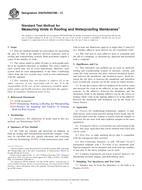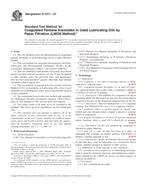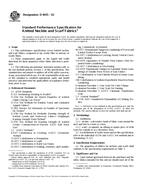1.1 This specification covers load-bearing and nonload-bearing reinforced autoclaved aerated concrete (AAC) floor, roof, wall, and stair elements used as components for building construction. Autoclaved aerated concrete is a cementitous product based on calcium silicate hydrates in which low density is attained by the inclusion of an agent resulting in macroscopic voids and is subjected to high-pressure steam curing. Installed units covered by this specification shall be protected against direct exposure to moisture using a coating material accepted by the AAC manufacturer.
1.2 The raw materials used in the production of autoclaved aerated concrete are portland cement, quartz sand, water, lime, gypsum or anhydrite, and an agent resulting in macroscopic voids. The quartz sand used as a raw material may be replaced by a siliceous fine aggregate other than sand and usually is ground to a fine powder before use. Fly ash may be used as a sand replacement. The batched raw materials are mixed together to form a slurry. The slurry is cast into steel molds. Due to the chemical reactions that take place within the slurry, the volume expands. After setting, and before hardening, the mass is machine cut with high accuracy into elements of various sizes. The elements then are steam-cured under pressure in autoclaves where the matrix is transformed into a solid calcium silicate hydrate.
Note 1
LOI up to 12 % may be acceptable for production of AAC provided supporting test data is presented by the manufacturer.
1.3 The values stated in inch-pound units are to be regarded as the standard. The values given in parentheses are provided for information only.
Product Details
- Published:
- 06/01/2006
- Number of Pages:
- 5
- File Size:
- 1 file , 96 KB


